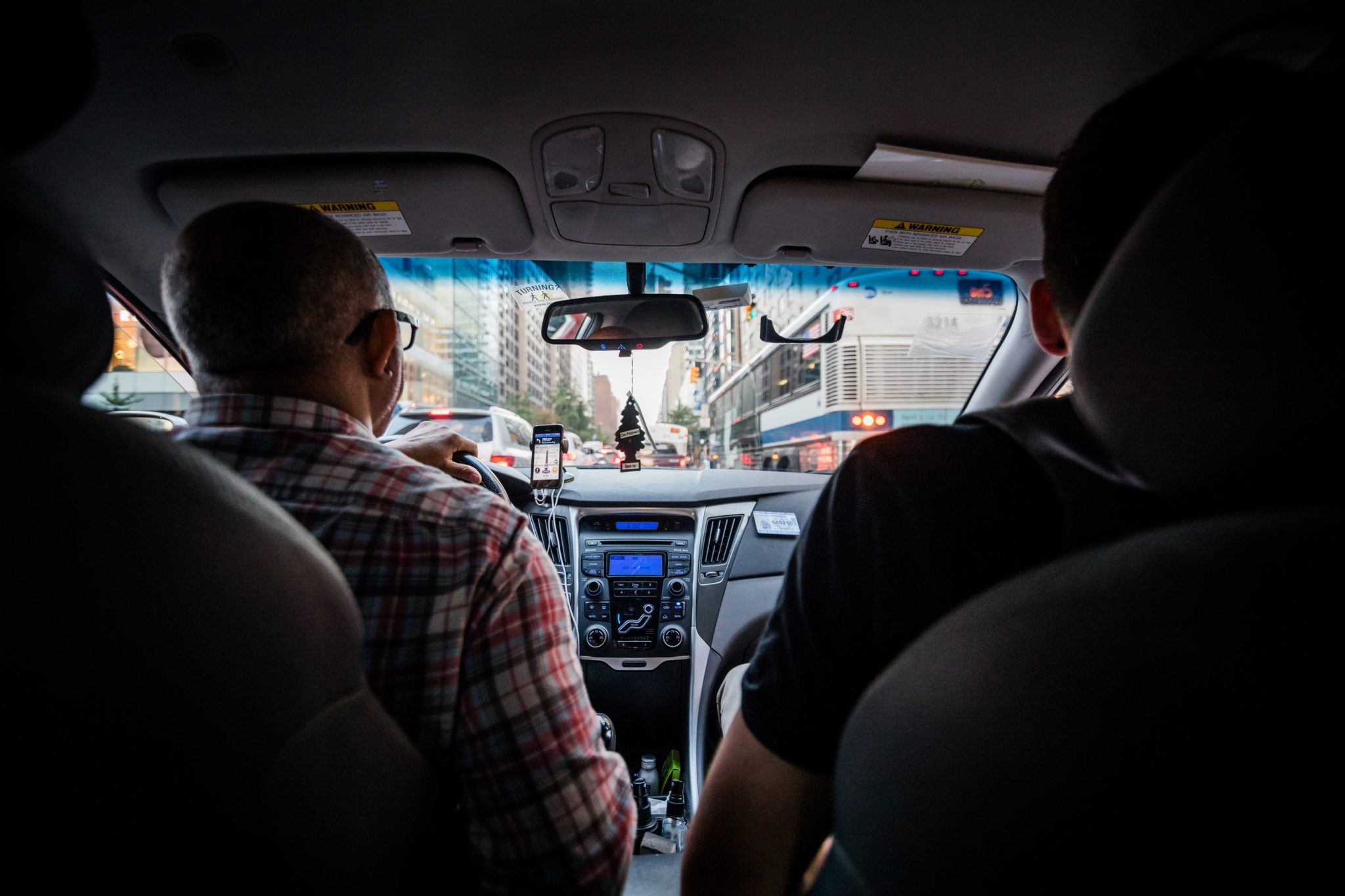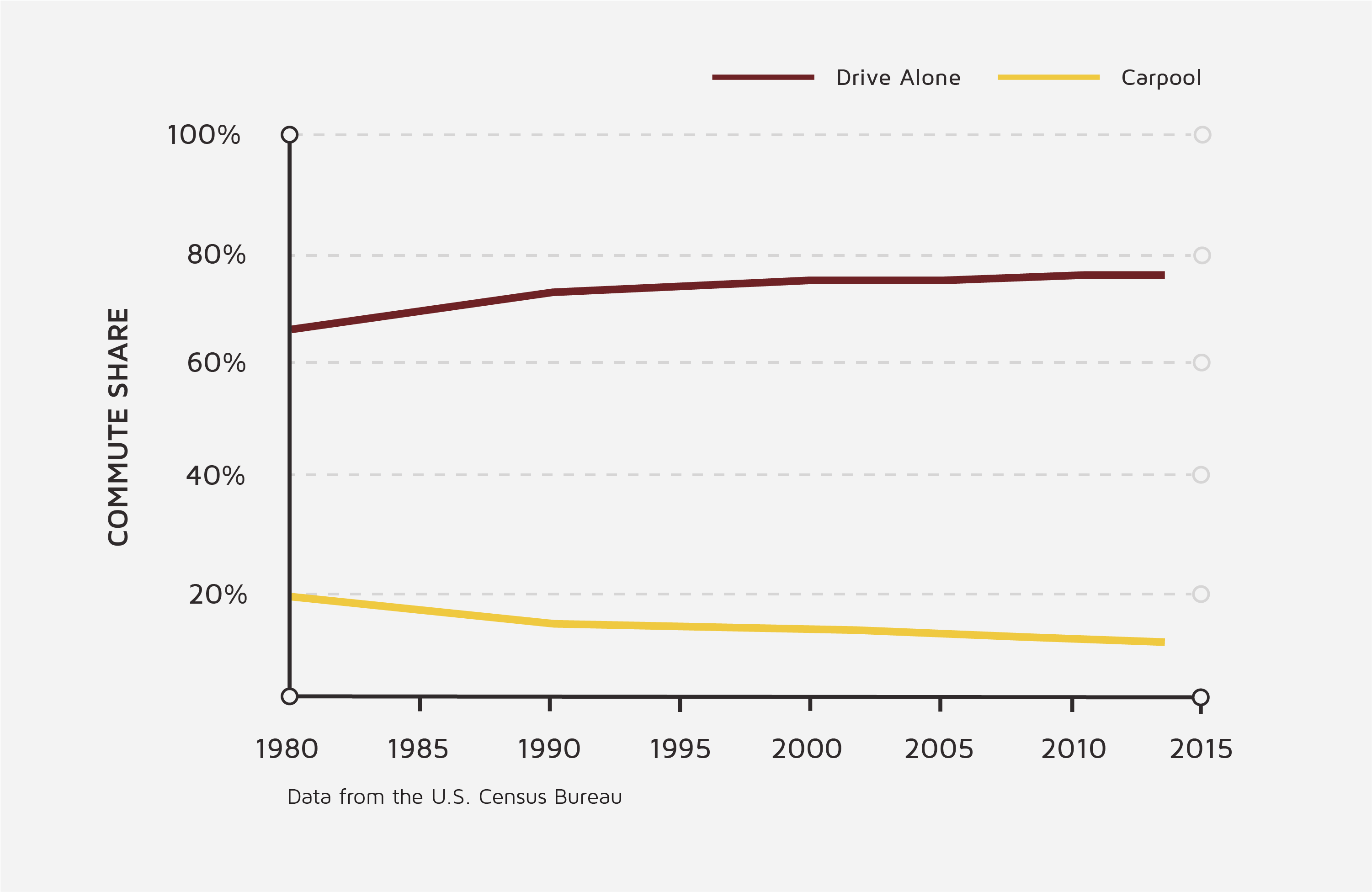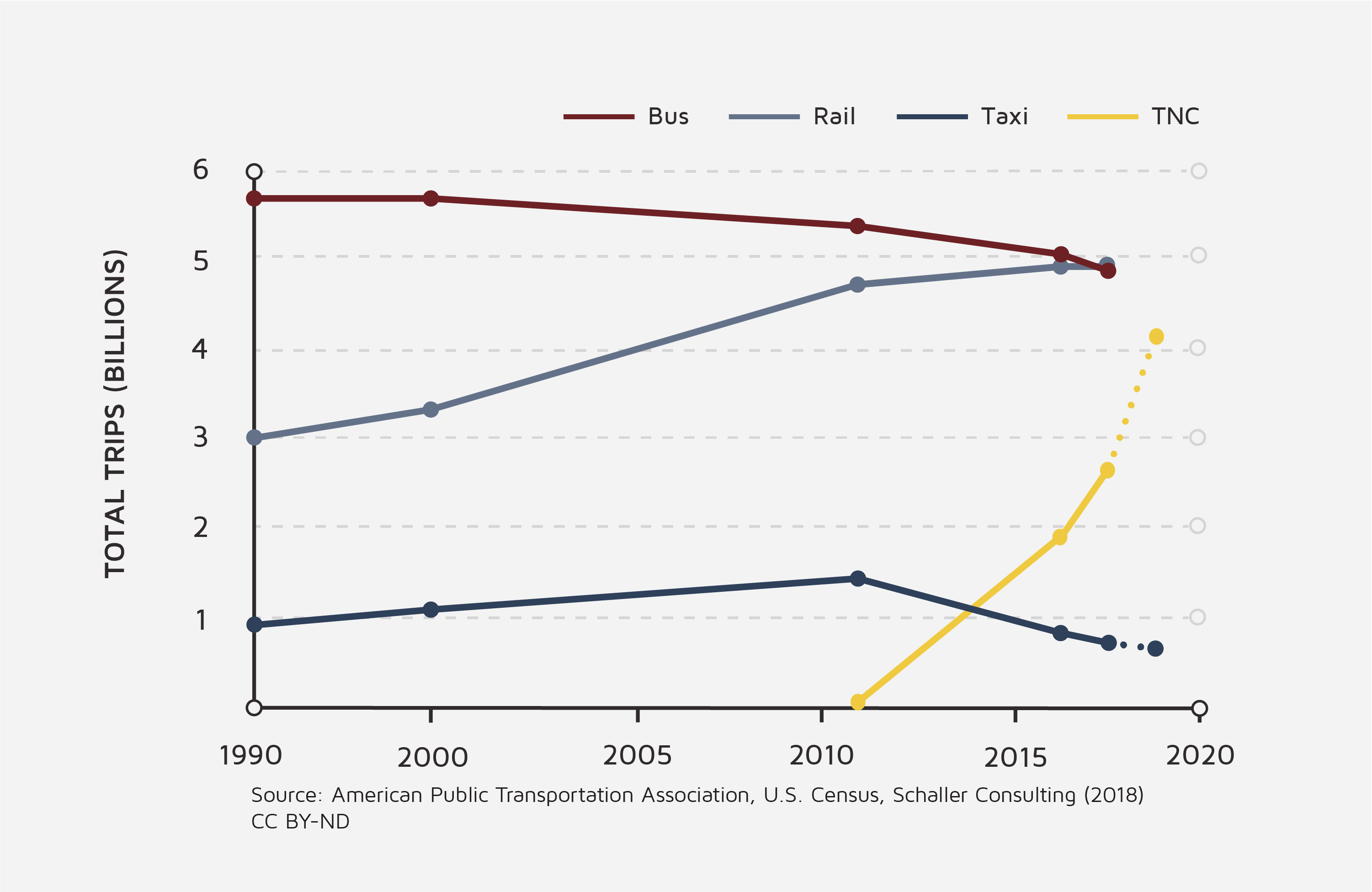
How Lyft and Uber Can Fix — Not Cause — Congestion
Ride-hail pooling is one of the most important innovations for achieving sustainable transportation
Studies suggest that Uber, Lyft, and other app-based ride-hailing services increase congestion by shifting some travelers away from mass transit. Such a shift is to be expected. Ride-hailing services offer users many of the same advantages as mass transit, such as the ability to avoid parking and the opportunity to travel without a driver’s license. These services also typically provide greater comfort and convenience than transit while remaining relatively affordable.
We should not overlook the possibility that ride-hailing increases congestion by diverting trips from transit into multiple smaller vehicles. But neither should we overlook the even greater, yet largely ignored, potential for ride-hailing to reduce net congestion — namely, by facilitating multi-passenger pooling.
Since the 1970s, policymakers have invested billions of dollars building a web of carpool lanes in most major U.S. cities. Yet pooling never caught on widely. Indeed, pooling steadily declined from about 20 percent of commute trips in the 1970s to less than 10 percent now (Figure 1). Each car on the road in the United States today contains an average of 1.6 passengers, and more often than not vehicles are occupied only by the driver.
Figure 1: The share of workers commuting by carpool has fallen steadily since 1980.

Ride-hailing services could vastly increase the market share of pooling. The popularity of services such as Uber, Lyft, and Via proves people will pool as long as it is easy, convenient, and reliable. And when people pool, everyone wins. Sharing a ride with just one other passenger effectively halves the travel cost per rider and reduces negative externalities of driving — including congestion — for society as a whole. This is particularly important for work commuters, since their trips tend to occur during peak hours, in peak directions of travel, and originate in or end at business districts where both parking and road space are at a premium.
What’s more, app-based pooling can increase equity by expanding transportation options for those not eligible to drive, who can’t afford a car, and/or are poorly served by transit. Pooling can also reduce noise, local air pollution, and greenhouse gas emissions by providing more transportation service per mile of vehicle travel. Fully realizing these benefits involves addressing some open challenges. Service providers will need to figure out how to best serve the unbanked and those without access to smartphones, while policymakers will need to figure out how to incentivize use of electric vehicles in pooling fleets.
In “Three Revolutions: Steering Automated, Shared, and Electric Vehicles to a Better Future,” we argue that pooling is one of the most important innovations for achieving sustainable transportation.

App-based pooling not only has the potential to reduce congestion, but also to increase equity.

Public officials should not just allow app-based pooling systems — they should champion them. We acknowledge valid concerns that app-based pooling may detract from public transit in some areas. But transit is already suffering across the country. Bus ridership has been declining for the past two decades (Figure 2) and funding for improving mass transit is limited. When thoughtfully deployed, app-based pooling can do much to support and improve public transit. For example, app-based pooling can provide first/last mile access to major transit stops and stations. It can also provide coverage during times when transit is not cost-effective, such as at night.
Figure 2: Transportation network companies (TNCs), like Uber and Lyft, have rapidly surpassed taxis’ trip share and are approaching that of buses and rail.

Unfortunately, policymakers have been generally slow to embrace these solutions. Chicago, for instance, imposes an $0.72-per-ride fee on all ride-hailing companies. This blanket fee does not differentiate between single-rider trips, which do little to reduce the negative external costs of driving, and pooled trips, which do. Chicago is not unique. As we go to press in May 2019, nine cities and 11 states have some sort of ride-hailing fee on transportation network companies (TNCs) like Uber and Lyft. Only New York City provides any citywide break for pooled rides.
New York City also recently approved congestion pricing in lower Manhattan — a move that will incentivize pooled travel for personal vehicles. In an open letter to the governor, a diverse coalition of transportation experts and stakeholders supported lower congestion fees for pooled travel. We agree and suggest a very steep discount for pooled trips, which will help manage congestion and address legitimate equity concerns.
Many transit agencies and other regional actors are experimenting with partnerships that take advantage of ride-hailing services while meeting transportation goals. For example, UCLA partnered with Lyft to offer flat Lyft Shared rates in the UCLA area. Lyft has also set up a large and growing number of pilot projects with transit providers.
Airports are also setting good examples for smart pooling policy. Airports are often governed by special districts that can set fees outside of state and local rules. Some airports are taking advantage of this capacity to manage ride-hailing traffic by encouraging pooling. In October 2019, for instance, the Massachusetts Port Authority will reduce fees by $1.75 for rides that are shared at Boston Logan Airport. Ride-hailing services will also be required to use “ride-matching” programs that discourage travel without passengers.
Ride-hailing companies loom large in public discourse, but still account for a relatively small share of trips taken in the United States — and hence have so far had relatively modest impacts on driving behavior, public transit use, and congestion. This may change with the advent of automated vehicles that could dramatically reduce ride-hailing service costs, leading to dramatic increases in ride-hailing use.
Now is a critical time to develop policy frameworks favorable to pooling in an era of wide availability of ride-hailing.
Cities reasonably want to regulate app-based ride-hailing services to protect public transit and to generate income. Such policies should be carefully designed to support pooling, discourage empty miles, and encourage transportation innovation. The vast majority of congestion, pollution, and equity problems that our societies face stem from the dominance of private vehicles in transportation systems, not from ride-hailing. Strategic, research-based policy can steer these systems to a more sustainable future.